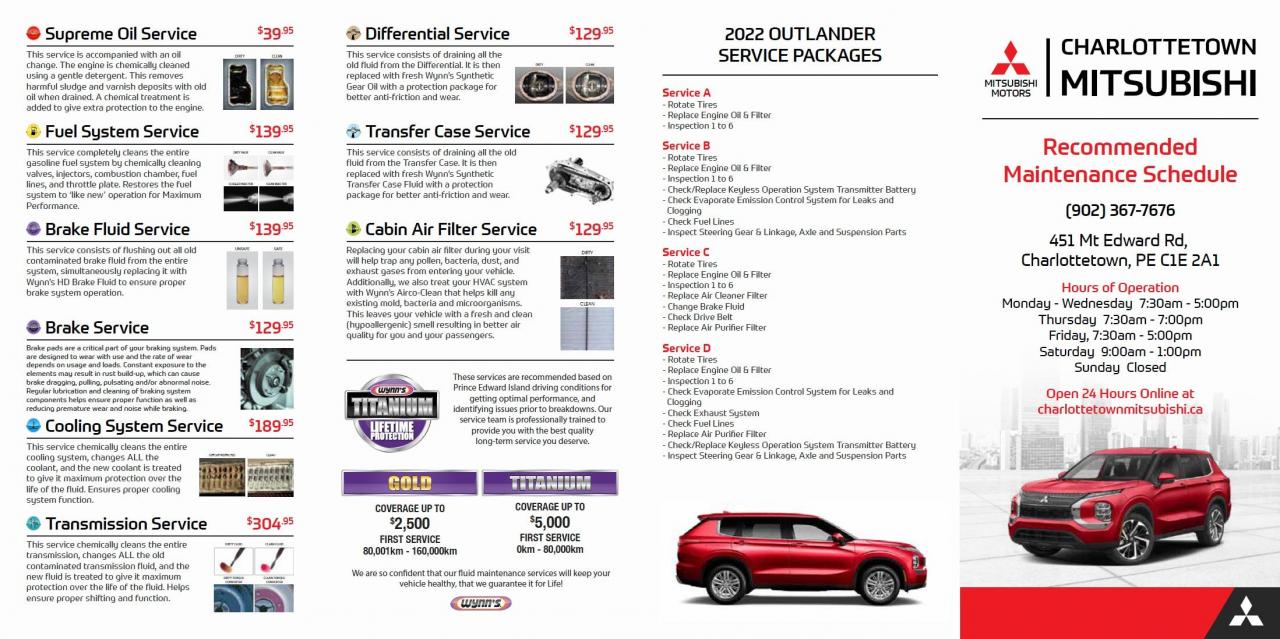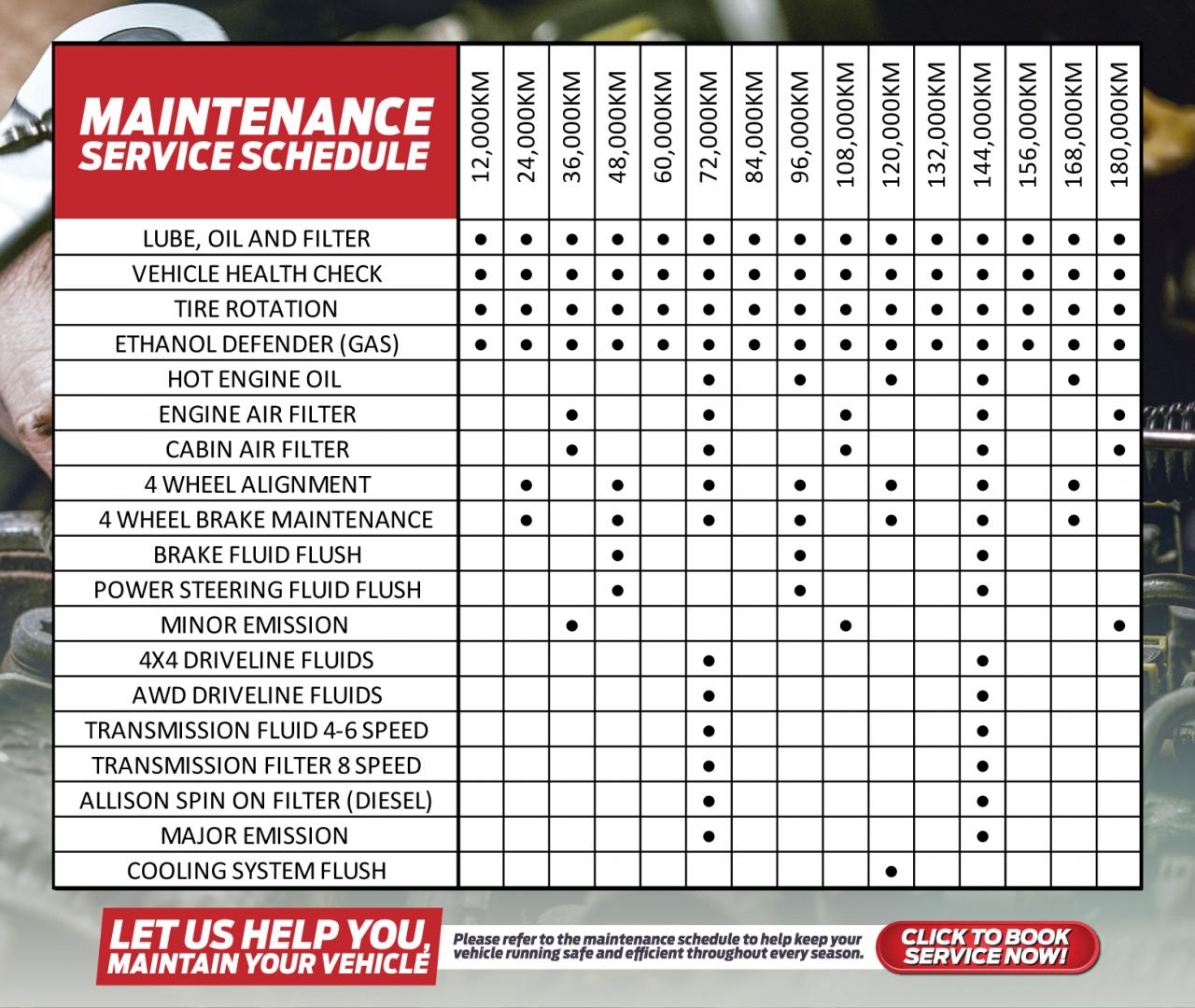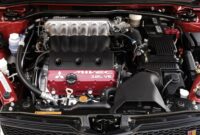Mitsubishi car maintenance schedule and costs: Knowing when and how much to spend on keeping your Mitsubishi running smoothly is key to long-term ownership satisfaction. From routine oil changes to more complex repairs, understanding your car’s maintenance needs can save you money and headaches down the line. This guide breaks down everything you need to know about maintaining your Mitsubishi, covering scheduled maintenance, cost estimates, DIY possibilities, and more.
We’ll delve into the specifics of maintenance schedules for various Mitsubishi models, like the Lancer, Outlander, and Mirage, providing estimated costs for common services. We’ll also explore the differences between using genuine Mitsubishi parts versus aftermarket options, helping you make informed decisions about your car’s upkeep. Plus, we’ll offer tips on finding reliable mechanics and resources to keep your Mitsubishi in tip-top shape.
Introduction to Mitsubishi Car Maintenance
Keeping your Mitsubishi running smoothly and extending its lifespan requires a proactive approach to maintenance. Regular servicing isn’t just about avoiding costly repairs down the line; it’s about ensuring optimal performance, safety, and fuel efficiency. Neglecting routine checks can lead to significant problems, potentially impacting both your wallet and your driving experience. Understanding the basics of Mitsubishi car maintenance is crucial for every owner.Regular maintenance significantly impacts the longevity and performance of your Mitsubishi vehicle.
Consistent servicing helps prevent small issues from escalating into major, expensive repairs. By adhering to a scheduled maintenance plan, you can catch potential problems early, ensuring your vehicle remains reliable and performs at its best for years to come. This proactive approach also contributes to improved fuel economy and a safer driving experience. Ignoring maintenance, conversely, can lead to premature wear and tear, reduced fuel efficiency, and increased safety risks.
Mitsubishi-Specific Maintenance Needs
Mitsubishi vehicles, like any other car brand, have specific maintenance requirements. These requirements are often detailed in your owner’s manual, which should be consulted regularly. Certain components might require more frequent attention than others, depending on driving conditions and the specific model. For example, the timing belt replacement interval might differ between a Lancer and an Outlander. Understanding these specifics ensures you address potential problems before they become major headaches.
It’s advisable to keep records of all maintenance performed, including dates, services, and the mechanic’s details.
Finding a Reliable Mitsubishi Mechanic
Locating a reputable mechanic specializing in Mitsubishi vehicles is essential for optimal car care. Look for mechanics with experience and certifications relevant to your specific Mitsubishi model. Online reviews and recommendations from other Mitsubishi owners can be invaluable resources. Consider asking your local Mitsubishi dealership for recommendations, though be prepared for potentially higher costs. A qualified mechanic will not only perform the necessary maintenance but will also offer advice on preventative measures to keep your vehicle in top condition.
Checking for certifications like ASE (Automotive Service Excellence) can provide an additional layer of assurance regarding their expertise and competence.
Scheduled Maintenance for Different Mitsubishi Models

Keeping your Mitsubishi running smoothly requires a proactive approach to maintenance. Regular servicing, based on your vehicle’s mileage and age, is key to extending its lifespan and ensuring optimal performance. Understanding your car’s specific maintenance schedule is crucial for budgeting and preventing costly repairs down the line. This section details the typical maintenance schedules for several popular Mitsubishi models, along with estimated costs.
Remember, these are estimates and actual costs may vary depending on your location, the specific service center, and any additional repairs needed.
Different Mitsubishi models have slightly varying maintenance schedules, influenced by factors such as engine type, drivetrain, and features. These schedules typically Artikel recommended service intervals based on mileage or time, whichever comes first. Regular adherence to these schedules helps prevent unexpected breakdowns and ensures your vehicle remains in top condition. The table below provides a general overview of maintenance for selected models.
Mitsubishi Model Maintenance Schedules and Estimated Costs
The following table provides a comparison of recommended maintenance schedules for several popular Mitsubishi models. Note that these are estimates and actual costs can vary based on location, service center, and any additional repairs.
| Model | Mileage Interval (miles) | Service Type | Estimated Cost (USD) |
|---|---|---|---|
| Lancer | 5,000 | Oil change, tire rotation, filter replacement | $150 – $250 |
| Outlander | 7,500 | Oil change, tire rotation, filter replacement, brake inspection | $200 – $350 |
| Mirage | 5,000 | Oil change, tire rotation, filter replacement | $120 – $200 |
| Lancer (after 100,000 miles) | 10,000 | Oil change, filter replacement, spark plug replacement, transmission fluid check | $300 – $500 |
| Outlander (after 100,000 miles) | 10,000 | Oil change, filter replacement, transmission fluid change, coolant flush | $400 – $600 |
| Mirage (after 100,000 miles) | 10,000 | Oil change, filter replacement, spark plug replacement | $250 – $400 |
Visual Representation of a Typical Mitsubishi Maintenance Schedule
Imagine a bar graph with the x-axis representing mileage intervals (0, 5,000, 10,000, 15,000, etc.) and the y-axis representing different maintenance services. Each bar represents a service interval. For example, a bar at the 5,000-mile mark would show services like oil change, tire rotation, and air filter replacement. The height of the bar could represent the estimated cost.
As mileage increases, additional services (like spark plug replacement, transmission fluid change, etc.) would be added to the graph, represented by taller bars at the corresponding mileage intervals. Different colored bars could represent different service types for clarity. This visual would show a gradual increase in the complexity and cost of maintenance as the vehicle accumulates mileage, illustrating the importance of regular servicing.
Cost Breakdown of Common Mitsubishi Maintenance Procedures
Maintaining your Mitsubishi, like any vehicle, involves regular upkeep to ensure optimal performance and longevity. Understanding the typical costs associated with these procedures can help you budget effectively and avoid unexpected expenses. This section breaks down the price ranges for common maintenance tasks, comparing the use of genuine Mitsubishi parts versus aftermarket alternatives, and highlighting factors that influence the final cost.Knowing the potential costs involved in maintaining your Mitsubishi is crucial for responsible car ownership.
This information allows you to plan your budget effectively and avoid any surprises. Let’s delve into a detailed breakdown of common maintenance procedures and their associated costs.
Cost Ranges for Common Maintenance Procedures
The cost of routine maintenance varies based on several factors, including your location, the specific Mitsubishi model, and the mechanic’s labor rates. However, we can provide a general cost range for common procedures to give you a realistic expectation.
Understanding Mitsubishi car maintenance schedules and associated costs is crucial for long-term ownership. Regular servicing ensures optimal performance, especially for demanding vehicles like the Triton. To truly appreciate the Triton’s capabilities, check out this comprehensive comparison of its off-road prowess against competitors: Mitsubishi Triton off-road capability comparison with competitors. Knowing its off-road potential helps you budget for potential wear and tear, ultimately informing your overall Mitsubishi car maintenance schedule and costs.
- Oil Change: Expect to pay anywhere from $50 to $150 for an oil change, depending on the type of oil used (synthetic vs. conventional) and whether you choose a dealership or an independent mechanic. This price typically includes the oil, filter, and labor.
- Brake Pad Replacement: Brake pad replacement is usually more expensive, ranging from $150 to $400. This price varies significantly based on the type of brake pads (ceramic, semi-metallic) and whether the rotors need resurfacing or replacement as well. Labor costs are a significant part of this expense.
- Spark Plug Replacement: Replacing spark plugs typically costs between $100 and $250. The number of plugs needed (depending on the engine) and the type of plugs (iridium, platinum) will directly influence the final price. Labor is again a key component of the cost.
Genuine vs. Aftermarket Parts
Choosing between genuine Mitsubishi parts and aftermarket alternatives can significantly impact the overall cost of maintenance. Genuine parts are manufactured by Mitsubishi and are guaranteed to meet the manufacturer’s specifications. Aftermarket parts, on the other hand, are produced by third-party companies and often come at a lower price point.
- Genuine Parts: While more expensive upfront, genuine parts often offer superior quality, durability, and a better warranty. They’re designed to perfectly integrate with your Mitsubishi vehicle, minimizing compatibility issues.
- Aftermarket Parts: Aftermarket parts are generally less expensive, but their quality can vary widely. Choosing a reputable aftermarket brand is essential to ensure reliable performance and longevity. A lower initial cost might lead to needing replacements sooner, potentially negating any initial savings.
Factors Influencing Maintenance Costs
Several factors can influence the overall cost of your Mitsubishi’s maintenance. Understanding these factors can help you make informed decisions and better manage your budget.
- Labor Rates: Labor rates vary significantly depending on your location and the type of mechanic you choose (dealership vs. independent shop). Dealership labor rates are typically higher than independent shops.
- Location: The cost of living and competition in your area can impact the price of parts and labor. Areas with a higher cost of living tend to have higher maintenance costs.
- Vehicle Age: Older vehicles may require more frequent and extensive maintenance, leading to higher overall costs. Regular maintenance on newer vehicles can help prevent more costly repairs later.
DIY Mitsubishi Maintenance: Mitsubishi Car Maintenance Schedule And Costs
Keeping your Mitsubishi running smoothly doesn’t always require a trip to the mechanic. Many simple maintenance tasks are well within the capabilities of the average DIY enthusiast, saving you money and giving you a better understanding of your vehicle. However, it’s crucial to know your limits and understand the potential risks involved before tackling any repair.Some maintenance tasks are straightforward and safe for beginners, while others demand specialized knowledge and tools.
Improperly performed repairs can lead to more extensive damage and costly repairs down the line. This section will Artikel some DIY possibilities, highlight the limitations, and provide a step-by-step guide for a common maintenance procedure.
Simple DIY Maintenance Tasks
Several routine checks and minor replacements are easily manageable for DIYers. These tasks help maintain your vehicle’s health and can often prevent more significant problems. Regularly performing these checks can extend the life of your Mitsubishi and save you money on professional maintenance.
- Checking engine oil levels: This involves locating the dipstick, removing it, wiping it clean, reinserting it fully, and then checking the oil level against the markings on the dipstick. Low oil levels should be addressed immediately.
- Checking coolant levels: Similar to checking oil, the coolant reservoir has markings indicating the minimum and maximum levels. Low coolant can lead to overheating.
- Checking brake fluid levels: The brake fluid reservoir is typically located under the hood and has a clear window showing the fluid level. Low brake fluid requires immediate attention.
- Replacing air filters: Air filters are relatively easy to access and replace. A clogged air filter restricts airflow to the engine, reducing performance and fuel efficiency. Replacement instructions are usually included with the new filter.
- Replacing cabin air filters: These filters improve the air quality inside the vehicle. Replacing a dirty cabin air filter can improve airflow and reduce odors.
Risks of Complex DIY Repairs
Attempting complex repairs without the necessary knowledge, tools, and experience can be dangerous and costly. Misdiagnosis can lead to further damage, potentially requiring more extensive and expensive repairs. Working on critical systems like the braking system or electrical components can have serious safety implications. For instance, improperly bleeding brakes could lead to brake failure, resulting in a dangerous accident.
Similarly, incorrect electrical work could damage the vehicle’s computer system or cause electrical fires. It’s always advisable to consult a professional mechanic for complex repairs.
Engine Oil and Filter Change Procedure
Changing your engine oil and filter is a relatively straightforward maintenance task that can be done at home, saving you money on professional services. However, it’s crucial to follow the correct procedure to avoid mistakes. This procedure is a general guide and might vary slightly depending on your specific Mitsubishi model. Always consult your owner’s manual for model-specific instructions.
- Gather your supplies: This includes new engine oil (the correct weight and quantity specified in your owner’s manual), a new oil filter, an oil filter wrench, a drain pan, a wrench for the drain plug, rags or shop towels, and funnel.
- Warm up the engine: Run the engine for a few minutes to warm the oil, making it flow more easily.
- Locate the oil drain plug: This is usually located on the bottom of the oil pan. Position the drain pan underneath.
- Carefully loosen and remove the drain plug: Use the appropriate wrench and be prepared for hot oil to drain out. Allow the oil to drain completely.
- Locate and remove the oil filter: Use the oil filter wrench to remove the old filter. Be prepared for some oil spillage.
- Lubricate the rubber gasket on the new oil filter: This ensures a proper seal.
- Install the new oil filter: Tighten it by hand according to the manufacturer’s instructions (usually about ¾ to 1 full turn after the gasket contacts the engine block).
- Replace the drain plug: Tighten it securely with the appropriate wrench.
- Add new oil: Use the funnel to pour the correct amount of new oil into the engine (as specified in your owner’s manual).
- Check the oil level: Use the dipstick to ensure the oil level is within the recommended range.
- Run the engine: Let the engine run for a few minutes and then check for leaks around the drain plug and oil filter.
- Dispose of used oil properly: Take the used oil to a recycling center or auto parts store that accepts used oil for recycling.
Finding Reliable Information and Resources
Navigating the world of Mitsubishi car maintenance can feel overwhelming, especially when trying to decipher conflicting information. Knowing where to find accurate and trustworthy resources is crucial for ensuring your vehicle receives the proper care and avoiding costly mistakes. This section will guide you to reliable sources for maintenance schedules, manuals, parts, and community support.Accessing official Mitsubishi resources and reputable online communities provides a strong foundation for informed decision-making regarding your vehicle’s upkeep.
By combining official documentation with the shared experiences of other Mitsubishi owners, you can build a comprehensive understanding of your car’s specific needs and potential issues.
Understanding Mitsubishi car maintenance schedules and associated costs is crucial for budgeting. Factors like model year and mileage significantly impact these expenses. To help determine if the investment is worthwhile, it’s vital to consider the long-term reliability; check out this insightful comparison: Are Mitsubishi cars reliable compared to Toyota and Honda? This will help you gauge whether the maintenance schedule and costs align with the vehicle’s overall dependability and longevity.
Official Mitsubishi Maintenance Schedules and Manuals
Locating your Mitsubishi’s official maintenance schedule is paramount. This document Artikels the recommended service intervals and procedures for your specific model and year. You can typically find this information in your owner’s manual, which should have been provided when you purchased the vehicle. If you’ve misplaced your owner’s manual, you can try contacting your local Mitsubishi dealership. They may be able to provide a digital copy or direct you to Mitsubishi’s official website, where you may find downloadable manuals or access to an online database searchable by vehicle identification number (VIN).
Mitsubishi’s website is often a primary source for official documentation and updated information regarding service intervals and recommended procedures. Additionally, you can contact Mitsubishi customer support directly; they can often assist with locating the correct maintenance schedule.
Reliability of Online Forums and Communities for Mitsubishi Owners
Online forums and communities dedicated to Mitsubishi vehicles can be valuable resources, offering a wealth of information from experienced owners. However, it’s crucial to approach this information with a critical eye. While many forum members share helpful advice and personal experiences, not all advice is equally reliable. Look for posts from users with established reputations and verifiable experience.
Cross-reference information found on forums with official Mitsubishi documentation to ensure accuracy. Remember, anecdotal evidence should supplement, not replace, official recommendations. For example, a forum discussion about a recurring problem with a specific model year might alert you to a potential issue, but you should still consult your owner’s manual and/or a mechanic for confirmation and professional guidance.
Reputable Online Sources for Finding Parts and Comparing Prices, Mitsubishi car maintenance schedule and costs
Finding the right parts at the best price is a key aspect of car maintenance. Several reputable online retailers specialize in Mitsubishi parts. When searching online, prioritize established businesses with positive customer reviews and clear return policies. Compare prices from multiple vendors before making a purchase, as prices can vary significantly. Be cautious of unusually low prices, as these may indicate counterfeit or inferior parts.
Always verify part numbers to ensure compatibility with your specific Mitsubishi model and year. For example, websites specializing in automotive parts, such as those affiliated with major auto parts chains or independent online retailers with a strong track record, often provide detailed specifications and customer reviews to help you make informed purchasing decisions. Using comparison shopping tools can further assist in identifying the best deals on genuine or high-quality aftermarket parts.
Warranty Considerations and Maintenance Impact
Keeping your Mitsubishi vehicle in tip-top shape isn’t just about smooth rides and peak performance; it’s directly tied to the validity of your warranty. Regular maintenance is crucial for protecting your investment and ensuring your warranty remains intact. Neglecting scheduled services can lead to costly repairs and void parts of your warranty coverage.Regular maintenance significantly impacts the validity of your Mitsubishi’s warranty.
Mitsubishi, like most automakers, requires adherence to a recommended maintenance schedule to maintain warranty coverage. This schedule Artikels specific services and their intervals, designed to prevent major issues and ensure the vehicle’s longevity. Failing to follow this schedule can provide grounds for Mitsubishi to deny warranty claims, leaving you responsible for expensive repairs. The specific terms and conditions of your warranty will be detailed in your owner’s manual; carefully reviewing this document is crucial.
Warranty Coverage and Exclusions
The Mitsubishi warranty typically covers defects in materials and workmanship for a specified period. However, damage resulting from a lack of proper maintenance is usually excluded. For instance, if you neglect to change your engine oil as recommended and this leads to engine failure, the repair costs might not be covered under warranty. Conversely, repairs related to factory defects discovered during routine maintenance, such as a faulty sensor detected during a scheduled service, would likely be covered.
Examples of Covered and Excluded Maintenance
Let’s look at some specific examples. Regular oil changes, tire rotations, and fluid top-offs are generally considered routine maintenance. While not explicitly covered under warranty (they are preventative measures), neglecting them can lead to problems thatare* excluded from warranty coverage. For example, failing to change the oil could lead to engine damage, which would likely not be covered.
Conversely, a faulty transmission discovered during a scheduled inspection is typically covered under the powertrain warranty, even though the inspection itself isn’t specifically a warranty-covered item. Essentially, the warranty covers the inherent defects, not the preventative maintenance itself.
Consequences of Neglecting Scheduled Maintenance
Ignoring scheduled maintenance could result in the rejection of warranty claims for related issues. This means you’ll be responsible for the full cost of repairs, potentially thousands of dollars. Further, neglecting maintenance could also lead to accelerated wear and tear, shortening the lifespan of your vehicle and potentially impacting its resale value. It’s a smart financial decision to stay on top of your maintenance schedule to protect your warranty and your investment.
Predicting Future Maintenance Costs

Planning for future car maintenance can seem daunting, but with a systematic approach, you can create a reasonable budget and avoid unexpected financial shocks. By tracking your current expenses and understanding common wear-and-tear patterns, you can build a more accurate prediction of what your Mitsubishi might cost to maintain in the coming years.Estimating future maintenance costs involves considering both the age and mileage of your vehicle.
Generally, older vehicles and those with higher mileage will require more frequent and potentially more expensive repairs. However, meticulous record-keeping and proactive maintenance can mitigate these costs significantly. Think of it like regular check-ups at the doctor; catching small problems early prevents them from becoming major, costly issues.
Estimating Future Maintenance Based on Age and Mileage
A simple method involves analyzing historical maintenance data for similar Mitsubishi models. Online forums, owner’s manuals, and independent repair shops often provide average cost ranges for various services at different mileage intervals. For example, a 5-year-old Mitsubishi Outlander with 60,000 miles might be due for a timing belt replacement, a costly but necessary procedure. By researching the average cost of this repair in your area, you can incorporate it into your future budget.
You can also consult your owner’s manual for recommended service intervals and anticipated costs for each milestone. Remember that these are estimates; actual costs may vary based on your location and the specific shop you use.
Factors Affecting Unexpected Maintenance Costs
Unforeseen repairs are the biggest wild card in predicting maintenance expenses. Severe weather conditions, accidents, or simply the unpredictable nature of mechanical components can lead to significant, unexpected bills. For example, a sudden transmission failure or a cracked engine block can easily cost thousands of dollars. To mitigate this risk, consider purchasing an extended warranty, which can cover major repairs not included in the standard manufacturer’s warranty.
Regular inspections by a trusted mechanic can also help identify potential problems before they escalate into costly breakdowns.
Spreadsheet for Tracking Maintenance Expenses
A simple spreadsheet can be invaluable for tracking maintenance costs. The spreadsheet should include columns for: Date, Description of Service, Mileage, Cost of Parts, Cost of Labor, Total Cost, and Notes (e.g., shop name, warranty information). Each time you have your Mitsubishi serviced, enter the relevant details into the spreadsheet. Over time, this data will provide a valuable record of your maintenance history and help you identify patterns and potential problem areas.
For example, you might notice that your Mitsubishi requires brake pad replacements more frequently than average, allowing you to budget accordingly for future replacements. You can even add a column to calculate the cost per mile for each maintenance item, giving you a clearer picture of your overall maintenance expenses. By regularly reviewing this spreadsheet, you can better predict future maintenance costs and adjust your budget accordingly.


